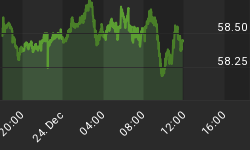The latest Federal Reserve flow-of-funds data show that nonfinancial corporations "retired" a record $587 billion of equity at an annual rate in Q1:2006 (see chart below). Nothing wrong with that in of itself. If corporations have nothing productive to do with their profits then they should return these profits to their shareholders via share buybacks or dividend payments. But there appears to be the beginning of an ominously familiar trend taking place - corporations increasing their credit market borrowing to finance stock buybacks. Also plotted in the chart below is the ratio of nonfinancial corporate borrowing as a percent of capital outlays. After hitting a cyclical low of 0.6% in Q4:2003, this ratio has moved up to new cyclical high of 49.4% in Q1:2006. Although shy of the last cyclical high of 61.7% (Q1:1999), bondholders ought to begin wondering if they are not being sacrificed once again to boost earnings per share for stockholders.

















